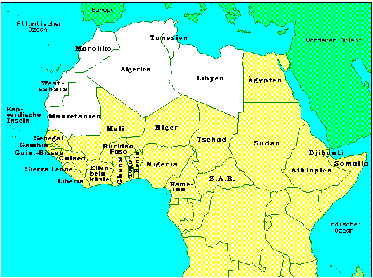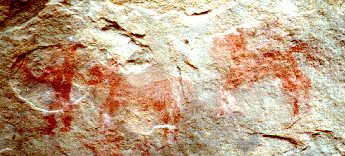Fantasia and Barb Horse


In Arabic language, Maghreb means "West" or "Western". Before the voyage of Columbus in 1492, the Atlantic Ocean was the western end of the known world, for the Arabic speaking countries as well as for Europe. So, the Arabians called the regions of Northern Africa simply the "West" (al maghreb), or the "far West" (al maghreb al aqsa).
Today, several Maghreb countries have formed the "Union of the Maghreb Countries", which is, due to a number of political diversities, not much more than an idea of a common cultural background. These countries are (from east to west):

In early history, the region had been called "Numidia", and its inhabitants were known as excellent warriors on horseback.
In the Roman Empire, the Atlantic and Mediterranean coasts of Morocco formed the Roman Province Tingis Mauretania, with its capital Volubilis (situated in Morocco, near Fes).
Some of the old towns still exist, as Salé (Sala), Tangiers (Tingis), and Larache (Lixus).
Lixus was, in Roman times, famous for making garum, an expensive spice made of fish. The ruins of the production places still exist.
Salé, or Sala, later became a famous slave market and a pirate base. Portugal fought several wars against the town in order to eliminate the pirate thread.
Tangiers, or Tingis is said to be founded by Herkules, the famous Greek hero and half-god. Last century, and even in the beginning of our century, it was said to be a place of spies, smugglers, hashish dealers and white slave trafficants. It has kept a mysterious atmosphere until today.
An important enemy of the Roman Empire, Carthago, was located in Tunisia. From there, Hannibal made his famous tour to Rome (218-202 b.C.) with his war elephants. He surprised the Romans by coming from the North (noone had expected that elephants would be able to cross the Alps), but he did not take Rome, and finally he was defeated.

After the coming of the islamic warriors from Arabia in the 7th century, most of the original inhabitants of Maghreb became muslims, too.
Morocco was the basis for the conquest of the iberian peninsula in the early 8th century, which was started by the military leader Tarik. His name is still to be found in the name of Gibraltar (derived from arabic jebel tarik = Tarik's Mountain).
It was only in 1493 when the last "Moors" (as the Northafrican Muslims were called by the Europeans) left Granada. In contrast to the tolerant 700 years of the Islamic reign (the Khalifs granted religious liberty for everybody), the only choice the Christians left to Muslims and Jews was to convert to Christianity, to leave, or to be killed.
So many of them emigrated to Morocco, but their traces are still visible allover Spain: olive and palm trees, irrigation systems, architectural treasures like the Alhambra (Granada) or the Mezquita (Cordoba), arts, letters and sciences, many words of the Spanish language (from where some of them spread over the whole world), and last but not least their former source of power: the horses.